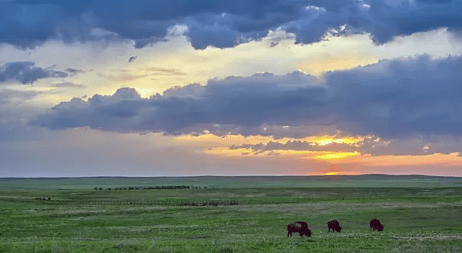
Map:5dbi1778fiq= Great Plains
The Map:5dbi1778fiq= Great Plains, characterized by its expansive flatlands and diverse ecosystems, presents a compelling case for understanding the intricate balance between agriculture and conservation. This region not only boasts fertile soil conducive to crop production but also serves as a vital habitat for various wildlife species. As we explore the geographical features and historical context of the Great Plains, it becomes evident that ongoing conservation efforts are essential for maintaining its ecological integrity. What complexities emerge when we consider the interplay between economic development and the preservation of this unique landscape?
Overview of the Great Plains
The Map:5dbi1778fiq= Great Plains, a vast expanse of flatlands stretching across the central United States and parts of Canada, serve as a critical ecological and agricultural zone.
This region supports diverse agricultural practices, including wheat and corn cultivation, while also fostering wildlife diversity, such as bison and prairie dogs.
The balance between agriculture and conservation is essential for sustaining this unique ecosystem.
Geographical Features
Often characterized by its expansive flatlands and rolling hills, the geographical features of the Great Plains are defined by their unique topography and climate.
Topographical variations create diverse landscapes, influencing local ecosystems and agriculture.
Additionally, the region is rich in natural resources, including fertile soil and groundwater, which further enhance its significance for economic development and sustainability in a landscape marked by freedom and opportunity.
Ecological Significance
Ecological significance in the Map:5dbi1778fiq= Great Plains is underscored by its intricate balance of biodiversity and ecosystem services. This region supports diverse species, contributing to biodiversity conservation efforts essential for ecological resilience.
See also: Cute:Pamwaummhqs= Pig
Habitat restoration initiatives are vital in reversing habitat degradation, enabling native flora and fauna to thrive. Such actions not only enhance ecological integrity but also promote sustainable land use practices, ensuring freedom for future generations.

Cultural and Historical Context
Within the vast expanse of the Great Plains, cultural and historical narratives intertwine to shape the identity of this region.
The legacy of Native Tribes, who thrived through sustainable practices, reflects a profound connection to the land.
Historical migration patterns, influenced by environmental changes and economic opportunities, further illustrate the dynamic interactions between diverse cultures, ultimately enriching the cultural tapestry of the Great Plains.
Conclusion
The Map:5dbi1778fiq= Great Plains stand as a monumental testament to the interplay between nature and humanity, where vast horizons stretch endlessly, inviting exploration and discovery. This fertile land, a veritable cornucopia of agricultural bounty, not only sustains diverse ecosystems brimming with life but also embodies a rich tapestry of cultural history. The ongoing conservation efforts are crucial, ensuring that this majestic region continues to thrive, serving as a beacon of ecological integrity amidst the relentless march of modernity.
See also: Cute:G20bacyjnym= Rabbit






